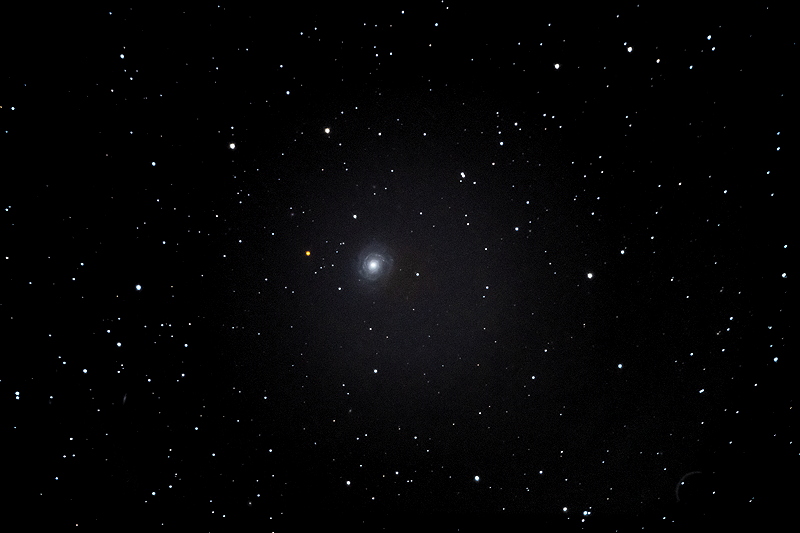Crescent Moon, ISS, More Galaxies
Posted: 8 April 2019
Cloudy skies returned on Monday, 1 April 2019, and continued until Sunday, 7 April. Had some rain (0.03") Saturday morning, 6 April.
|
Open: Sunday, 7 April 2019, 1830 MST Temperature: 87°F |
Session: 1343 Conditions: Mostly clear |
Equipment Used:
12" f/8 LX600 w/StarLock
2" 24mm UWA eyepiece
2" 2X Powermate
Camera:
D850 DSLR
SYNCed observatory clock to WWV time signals.
1850 MST: sunset. Time was approximate due to clouds along western horizon.
1851 MST: LX600 ON, StarLock OFF, High Precision OFF.
Note: there had been concern about the "GPS rollover" that occurred Saturday, 6 April. Some older GPS receivers would see the date revert to "1999". The GPS receiver on my LX600 telescope (received in 2016) did not experience any problems.
1854 MST: viewed the crescent Moon, 102X.
Mounted the D850 DSLR at prime focus. Took these images of the crescent Moon (1/320sec, ISO 800) and Earthshine (1/4sec, ISO 1600):


I updated the TLE for this night's short pass of the International Space Station (ISS). I mounted the D850 DSLR at prime focus + 2X Powermate for a video recording of the ISS. Settings were 2160p, 30fps, 1/2000sec, ISO 3200. SYNCed the AutoStar on the star Capella, focused and locked the 12" primary mirror, checked the alignment of the finderscopes.
This pass was near the North Celestial Pole. As a result I lost view of the Space Station once I could no longer view it through either finderscope when their eyepieces got to close to the fork arms. Also, due to the long optical train with the Powermate, when the camera came close to the base of the mount, so I aborted tracking. While not great images, I was able to get these three images, cropped from the full frame video:

I will revert to imaging at prime focus without additional optical magnification on future ISS imaging attempts.
I removed the Powermate and mounted the D850 DSLR at prime focus, focused on Capella, and locked the mirror. I then began imaging some more galaxies for my Extragalactic Supernova Project.
2033 MST: High Precision ON.
Slewed to NGC3031 (M81, Bode's Galaxy).
2037 MST: StarLock ON.
Took the following StarLock autoguided, 5 minutes, ISO 6400, White Balance 5000K images:
NGC3031 (M81, Bode's Galaxy)

NGC3034 (M82, Cigar Galaxy)

NGC3079

NGC3115

NGC3147

I also took this StarLock autoguided, 1 minute, ISO 6400, White Balance 5000K image of M82 (Cigar Galaxy). The shorter exposure (cropped) shows the details in the galaxy better than the longer exposure.

2150 MST: High Precision OFF.
I also tried to image the Twin Quasar in Ursa Major (RA 10h 01m 20.99s, DEC +55° 53' 56.5", Magnitude +16.7). Unfortunately, a slight pointing error put it outside of the image field-of-view. Will try again on a future session.
2158 MST: StarLock OFF.
2214 MST: LX600 OFF.
|
Close: Sunday, 7 April 2019, 2224 MST Temperature: 61°F |
Session Length: 3h 54m Conditions: Clear |
Comments are welcome using Email. Twitter users can use the button below to tweet this report to their followers. Thanks.
Cassiopeia Observatory Home Page
Copyright ©2019 Michael L. Weasner / mweasner@me.com
URL = http://www.weasner.com/co/Reports/2019/04/08/index.html
